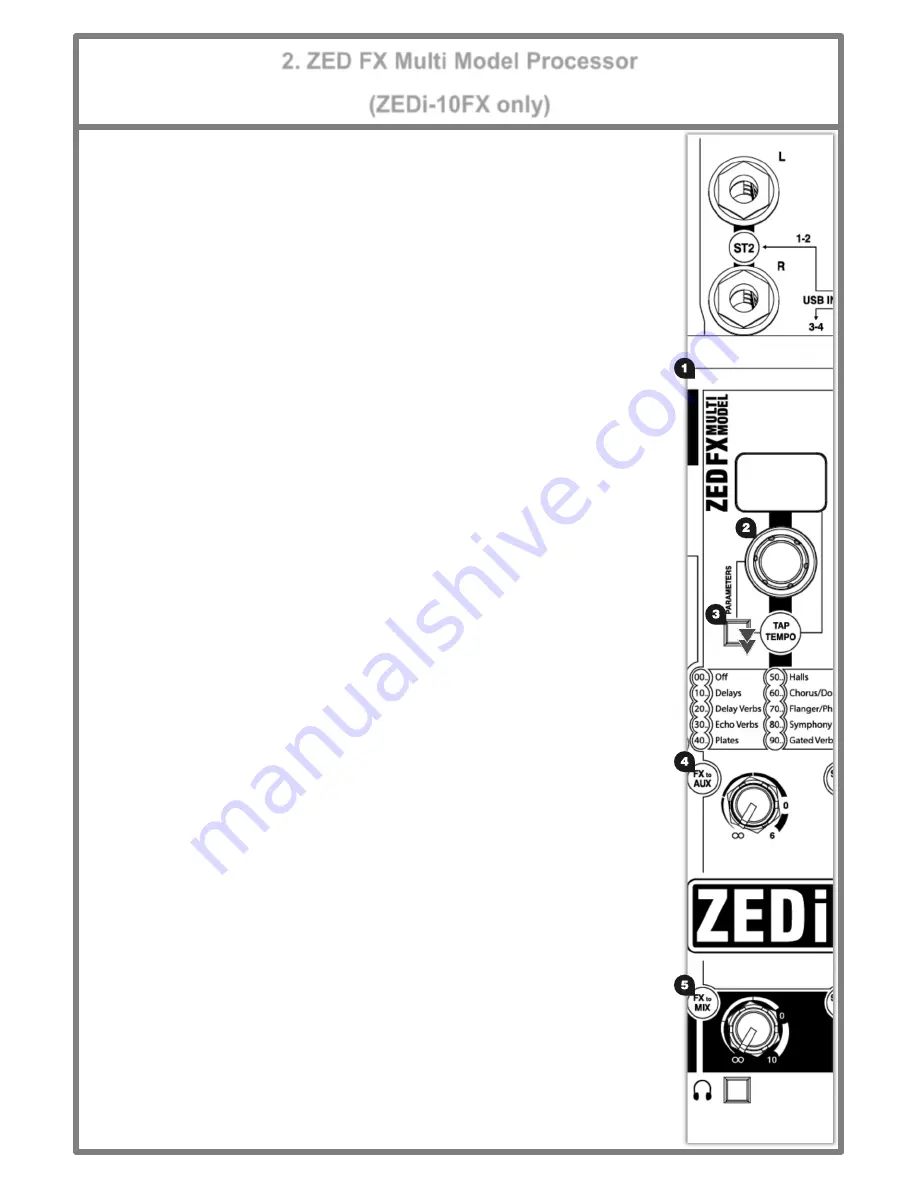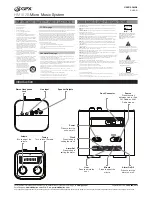
5
2.1 EFFECTS SECTION
Effects such as reverb and delay are generally used to add “natural sounding” acoustics and
a sense of space to the mix, but can also be used to add interesting repetitions in time with
the music. Modulation effects can be used to enhance a sound harmonically or to add depth
and motion.
1.
The
ZED FX Multi Model
processor is a high quality built-in effects unit which is fed with
a mono signal from the FX buss.
2. FX Select / Parameter control
is used to scroll through effects presets and make
changes to editable parameters.
3. TAP TEMPO Button
can be used to adjust the frequency or tempo of delay effects
that include a Tap Tempo parameter. If a delay effect is selected then you will see a
flashing decimal point on the right hand side of the preset display.
Change effects parameters
by pressing and holding down the
TAP TEMPO
button
and turning the effects
FX Select / Parameter
control. The display will show a parameter
value of P0 to P9.
Reset the editable effects parameters
to factory defaults, by holding down
FX
Select / Parameter control
and
TAP TEMPO Button
at the same time whilst
switching on the power.
Turn off the internal effects
by setting the
ZED FX Multi Model
preset to “
00
”.
4. FX TO AUX
controls the level of effects signal sent to the aux buss and
AUX OUT
from
the
ZED FX Multi Model
processor
5. FX to MIX
rotary fader controls the volume of the stereo (wet) effects signal into
the
MAIN MIX
.
ST2 Inputs
are routed to the
MAIN MIX
via the
FX MIX
control and are intended as
a stereo return channel for external effects processors, but can be used as an input for
other stereo sources when the
ZED FX Multi Model
is not in use.
A latching footswitch can be connected to the
FX OUT (see section 1.3)
and used to mute
the output from the
ZED FX Multi Model
processor. The footswitch must be wired between
Tip and Sleeve.
For more information on using the ZED FX Multi Model processor see section 6.4 .
2. ZED FX Multi Model Processor
(ZEDi-10FX only)






























